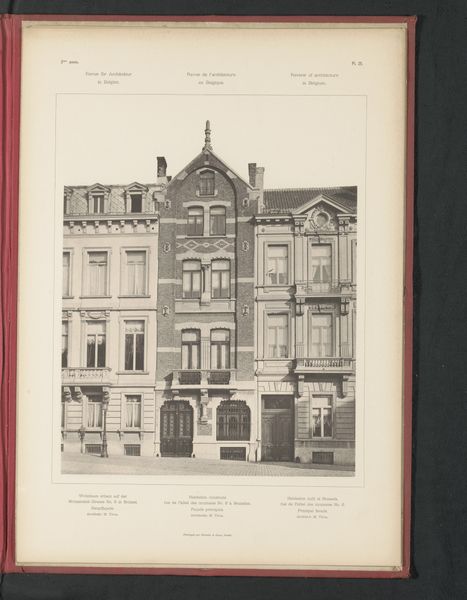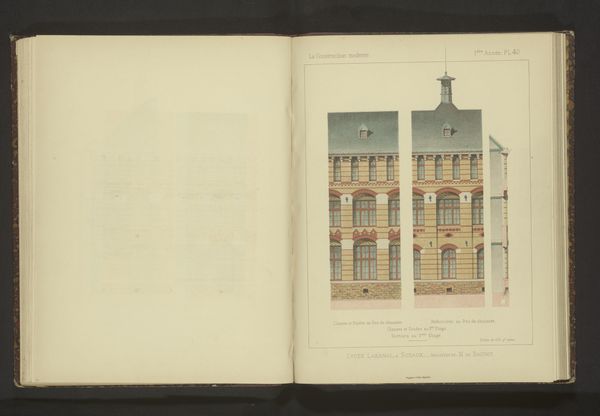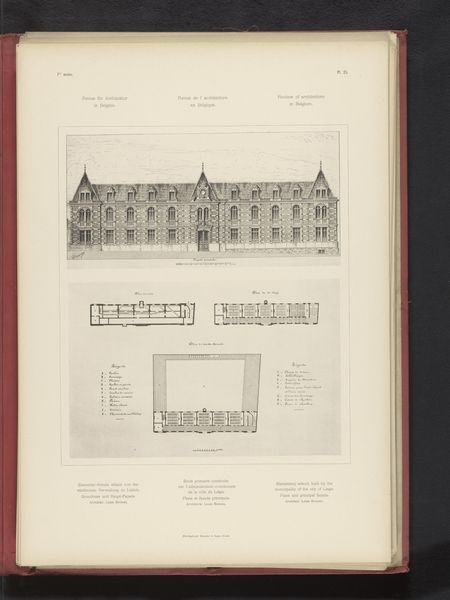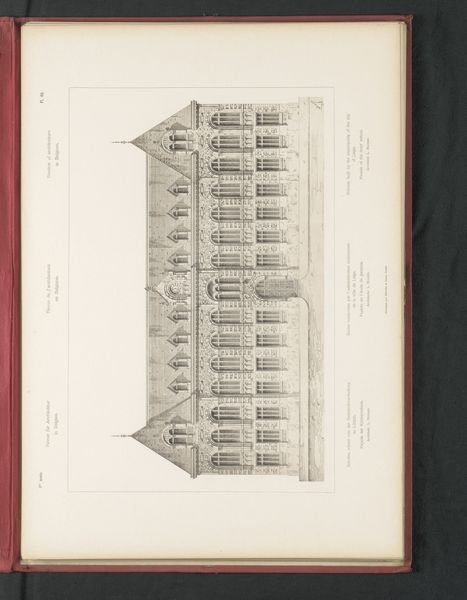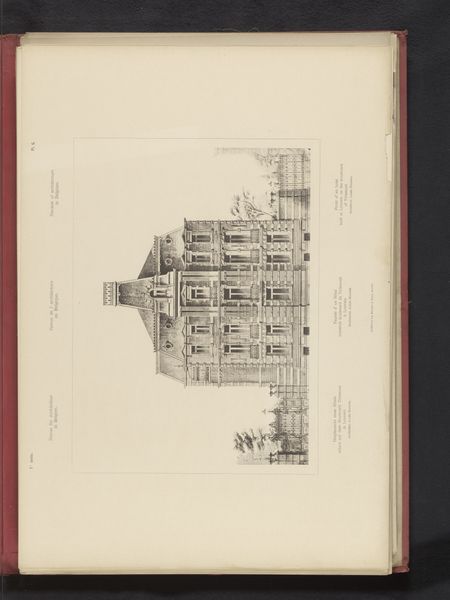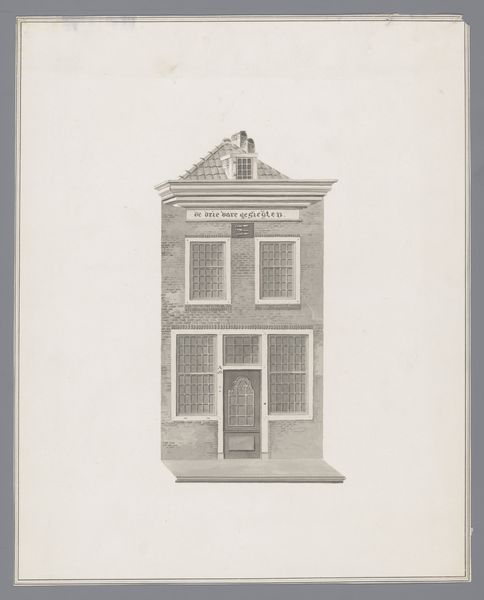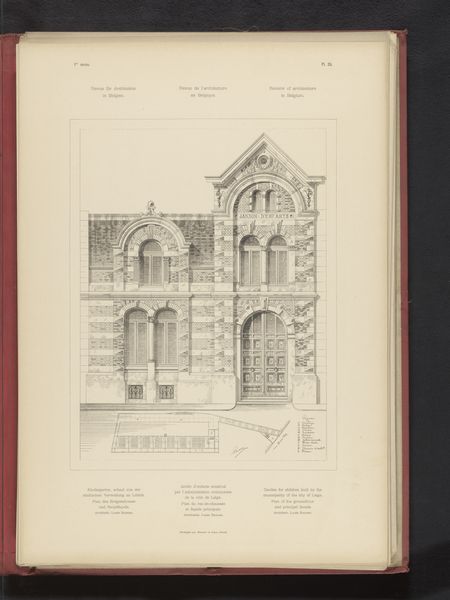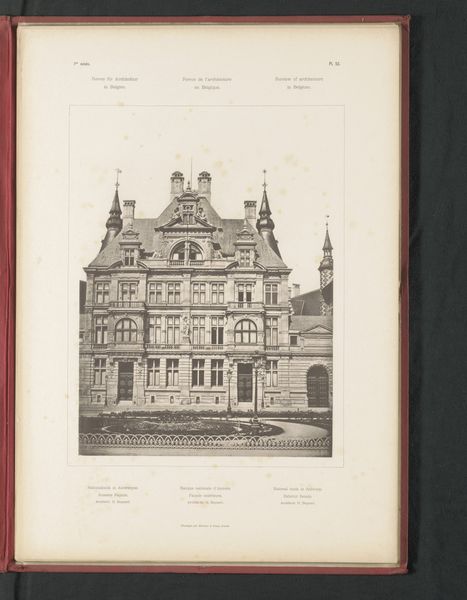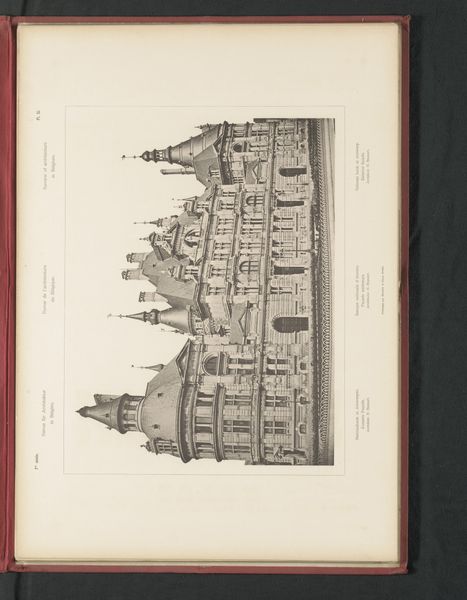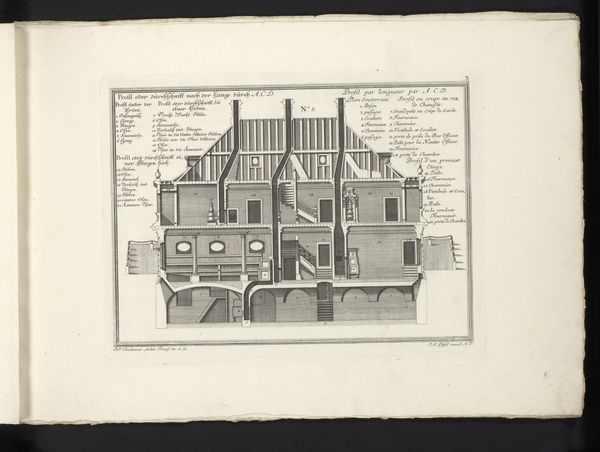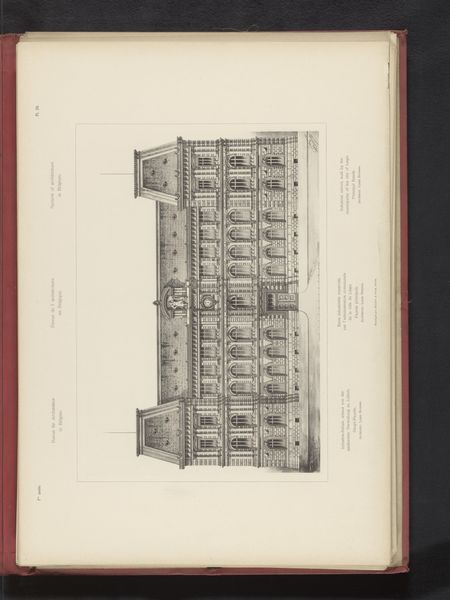
Reproductie van een ontwerp van een vooraanzicht van een meisjesschool, door Louis Boonen before 1893
0:00
0:00
Dimensions: height 385 mm, width 254 mm
Copyright: Rijks Museum: Open Domain
Editor: So, this is "Reproductie van een ontwerp van een vooraanzicht van een meisjesschool, door Louis Boonen," dating from before 1893. It's a pencil and drawing, a design for a girls' school. I am curious about the attention to detail in representing brickwork – how should we interpret it? Curator: From a materialist perspective, this drawing isn't just about aesthetics or neoclassical design, but about the very construction and resources that make this building possible. Consider the brick itself: where does it come from? Who is producing it? How is this design reflecting access to material? Editor: I see… so it's less about the beauty of the design and more about understanding the materials behind the building. Does the drawing technique contribute to this perspective? Curator: Precisely! Pencil drawings, like this one, were often crucial for architects to communicate their vision, but also as a tool for planning resource allocation. The drawing would then influence the labor and economic decisions concerning construction, highlighting architecture as a process rather than solely an art form. Notice also the detailed rendering of the facade – suggesting a pride or focus on this specific viewpoint of the building’s social presence. What materials do you see referenced and what does it indicate about social status? Editor: Hmm, the details in the facade compared to simpler designs suggest it could be prioritizing the exterior over interior resources, signifying bourgeois respectability. That makes the term “reproductie” especially charged – implying a larger cycle of influence and economic structure in art. Curator: Exactly. We've gone beyond simply viewing this as an architectural sketch, and into interpreting the social relations embedded within its very materials and construction techniques. The historical context provides much greater understanding than initially surmised. Editor: That gives me a completely different perspective. I am grateful to gain the deeper context through analyzing how a drawing's material and social role shapes the artwork itself.
Comments
No comments
Be the first to comment and join the conversation on the ultimate creative platform.

